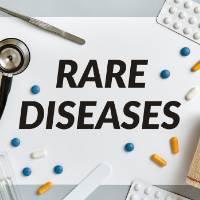Description
Researchers at the National Institutes of Health have found a duplication of a short stretch of the X chromosome in some people with a rare disorder that causes excessive childhood growth. They believe that a single gene within the region likely has a large influence on how much children grow. The research comes from a lab at NIHs Eunice Kennedy Shriver National Institute of Child Health and Human Development (NICHD), which seeks to understand growth.
Gigantism results from a defect in the pituitary, a pea-sized gland at the base of the brain that makes growth hormones and controls the activity of other glands in the body. Some people with gigantism have a tumor in the pituitary that secretes extra hormone; others just have an oversized pituitary. Gigantism is often treated by removing the tumor, or even the entire pituitary, but can sometimes be treated with medication alone.
Giants are very rare. If you have three cases in the same family, that is veryrare, Dr. Stratakis said. He explained that most of the pituitary gland of the mother in the first family was removed when she was 3 years old, and in adulthood she was only a little above average height. Both of her sons had gigantism, too, and had pituitary surgery.
Card
Media Related LinkOut
Remarks
Rare Diseases Insighter Rare Diseases Awarness
Improve access to InformationAbout Us
Rare Diseases Insighter -Â Rare Diseases Insighter mission is to expand public knowledge of rare diseases and to provide source verified information that is patient-centered and data-driven. This information may easily be shared with the community in a variety of social media formats, including FB, TWT, LinkedIn, emails, and more.Â
Medical experts and representatives of patient organizations who would like to assist MBiCircle in developing reports on topics not currently covered here, please contact us.
A rare disease is a condition that affects fewer than 200,000 people in the United States or no more than 1 of every 2,000 people in Europe. Examples of rare diseases are life-threatening and physically or mentally disabling conditions such as Huntington disease, spina bifida, fragile X syndrome, Guillain-Barr syndrome, Crohn disease, cystic fibrosis, and Duchenne muscular dystrophy.
Possibly the main reason for the limited applicability of the public health approach to rare diseases is that patients are few and scattered across populations. But another reason is that approaches based on identifying and removing risk factors are generally not well-suited for diseases whose primary risk factors are innate or congenital and therefore irremovable.
Contact
Address: Main Street, Los Altos, CA, 99999
Web Site Address: https://mbicircle.com/RareDiseasesInsighter
E-mail: support@mbicircle.com


